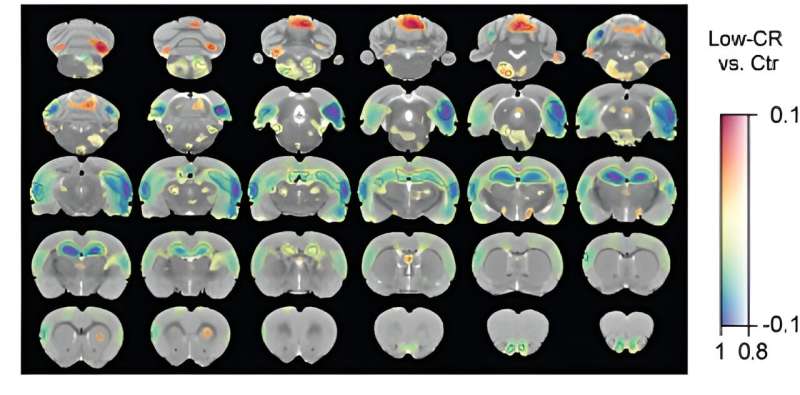This article has been reviewed according to Science X's editorial process and policies. Editors have highlighted the following attributes while ensuring the content's credibility:
fact-checked
peer-reviewed publication
trusted source
proofread
Study offers explanation for why only some develop posttraumatic stress disorder

A study by researchers at EPFL shows why only a subset of individuals exposed to trauma develop posttraumatic stress disorder (PTSD). The research, centered on the body's stress hormone response, could pave the way for more targeted treatments for PTSD.
Posttraumatic stress disorder (PTSD) is a debilitating condition that arises after experiencing traumatic events. While many people experience trauma, only about 25%–35% develop PTSD. Understanding the factors that make certain individuals more susceptible is crucial for both prevention and treatment.
A new study led by Carmen Sandi and Simone Astori at EPFL, now published in Biological Psychiatry, reveals how the development of PTSD is influenced by glucocorticoids, hormones that our body releases in response to stress, like cortisol. The work provides significant insights into the behavioral and biological traits associated with PTSD vulnerability.
"There are considerable differences in the levels of glucocorticoids that individuals release to the bloodstream when stressed," says Sandi. "Low glucocorticoid levels are frequently observed in PTSD patients following trauma exposure and were initially suspected to be a consequence of trauma exposure.
"The possibility that this could be a trait constituting a preexisting PTSD risk factor has been an outstanding open question for many years, but tackling it has been challenging due to the difficulties of both collecting biological measures before trauma exposure, and having access to relevant animal models in which the causal role of these traits can be investigated."
To explore how a reduced hormonal response to stress might be linked to PTSD symptoms, the researchers used a genetically selected rat model that mimics people with blunted responses to cortisol. To do this, the team used MRI scans to measure the volume of different brain regions, trained rats to associate a cue with fear, recorded their sleep patterns, and measured their brain activity.
By combining these methods, the researchers discovered that a blunted responsiveness to glucocorticoids led to a "correlated multi-trait response" that includes impaired fear extinction (in males), reduced hippocampal volume, and rapid-eye movement sleep disturbances.
To explain the terms: Fear extinction is a process by which a conditioned fear response diminishes over time; problems with fear extinction are a hallmark of PTSD. Rapid-eye movement is crucial for memory consolidation, and disturbances in this type of sleep pattern have long been associated with PTSD.
But the study didn't end there. The researchers treated the rats with the equivalent of human cognitive and behavioral therapy to reduce their learned fears. After that, they gave the rats corticosterone. As a result, both excessive fear and disturbances in rapid-eye movement sleep receded. Not only that, but the increased levels of the stress-related neurotransmitter norepinephrine in the brain also returned to normal.
"Our study provides causal evidence of a direct implication of low glucocorticoid responsiveness in the development of PTSD symptomatology following exposure to traumatic experiences, i.e., impaired fear extinction," says Sandi. "In addition, it shows that low glucocorticoids are causally implicated in the determination of other risk factors and symptoms that were until now only independently related to PTSD."
Silvia Monari, the study's first author, adds, "In a nutshell, we present mechanistic evidence—previously missing—that having low glucocorticoids such as cortisol in humans is a condition for causally predisposed individuals to present all to-date vulnerability factors for developing PTSD, and causally involved in deficits to extinguish traumatic memories."
More information: Silvia Monari et al, Blunted Glucocorticoid Responsiveness to Stress Causes Behavioral and Biological Alterations That Lead to Posttraumatic Stress Disorder Vulnerability, Biological Psychiatry (2023). DOI: 10.1016/j.biopsych.2023.09.015


















